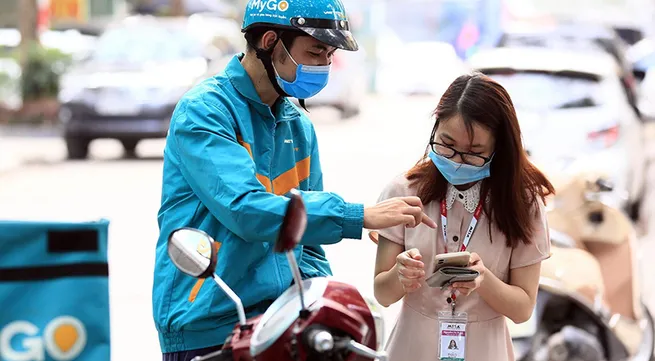Multichannel retail a new trend amidst pandemic in Vietnam

Shopping channels from apps to social media and supermarket call centres are operating at full capacity, helping drive growth for retailers and suppliers of goods as well as allowing consumers to minimise direct contact with each other and subsequent exposure to the virus.
Multichannel retail development
The COVID-19 pandemic is making consumers more conscious of their health and safety, resulting in significant changes in their shopping habits towards an increase in online shopping via e-commerce platforms.
With the popularity of social networking sites and e-commerce platforms, online shopping is becoming a new trend amongst Vietnamese consumers and in going forward it can could have changed their shopping habits forever. As such, the development of multiple sale channels, both online and physical, is now a necessity for the Vietnamese retail sector.
In fact, the past several years have seen some retailers step up their multichannel model to meet consumers’ demand, helping make their shopping journeys more convenient.
VinCommerce, which manages VinMart and VinMart+ supermarkets, is a success story in shaping the consumer habit of buying essential goods through its VinID app. With diverse offerings from fruit and vegetables to fresh meat and dried foods sourced from its stores, the company affords consumers the convenience of having what they need for their daily lives without having to visit a physical store.
Lotte Mart has also launched a mobile app to allow consumers to choose from up to 3,000 different types of goods on its online supermarket and have them delivered to their homes.
For production companies, many are also starting to pay more attention to multichannel sales though most acknowledge that these online channels have yet to bring in much benefit. The food maker Vissan, for instance, began selling their products on e-commerce platforms and promoting online sales through its hotline and website in early 2020. The company targets 20% growth in its online channels in 2021 and aims to raise its share of revenue through this channel to 30% in the future.
The giant dairy producer Vinamilk has stated it has been investing in e-commerce in recent years but its contribution remains small as most consumers still retain the habit of buying at a store near them. Nevertheless, the company is still pushing for the development of its physical stores to support their online channel as it continues to be an inevitable source demand during the pandemic.
Changing shopping habits
In addition to the growing number of convenience stores and minimarts, online retail is considered a channel with great potential and much room for development thanks to technological developments.
In Ho Chi Minh City, the supermarket chain Co.op Mart recently piloted a new retail model known as “pick and ship”, in which the supermarket will do the shopping for its customers. In this way, consumers visiting the are arranged in well-ventilated areas and wait to receive the products they have selected. This innovative way of operating minimises crowds at cashier counters and shelves, especially during peak hours.
Van Tien Hieu, living in District 9, said in the past when he visited this supermarket, he was asked to wait in line and maintain distance from others, which he said is not practical as consumers may still stand close together or touch others by accident.
But he was quite surprised when going to the supermarket in recent days as he only had to sit and browse the list of products on offer, then write what he needed and the quantities as well as his name and phone number. A supermarket worker then collected the items for him, checked the goods and payment was made.
The whole process took about 15-20 minutes.
Hieu said some may find this inconvenient as they could not choose the goods directly but noted that it can help reduce infections between consumers given the complicated COVID-19 situation in Ho Chi Minh City.





